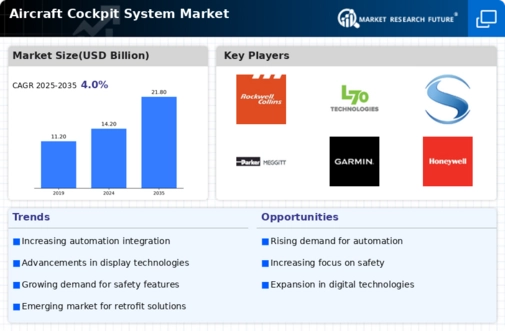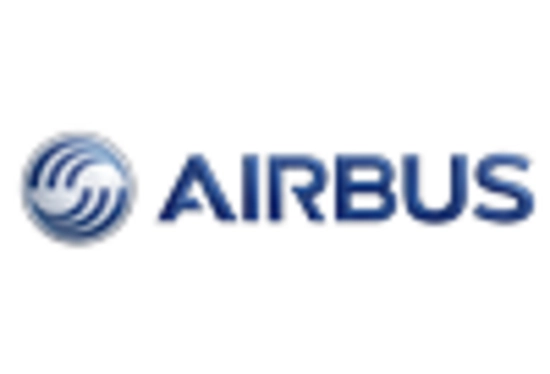Focus on Pilot Assistance Systems
The Aircraft Cockpit System Market is increasingly focusing on pilot assistance systems, which are designed to enhance the operational efficiency and safety of aircraft. These systems provide real-time data and alerts, enabling pilots to make informed decisions during critical phases of flight. The demand for such systems is expected to rise, with the market for pilot assistance technologies projected to reach USD 3 billion by 2027. This growth is attributed to the increasing complexity of modern aircraft and the need for enhanced safety measures. Consequently, the Aircraft Cockpit System Market is likely to see a surge in investments aimed at developing more sophisticated pilot assistance solutions.
Integration of Advanced Technologies
The Aircraft Cockpit System Market is witnessing a transformative phase driven by the integration of advanced technologies such as artificial intelligence, machine learning, and augmented reality. These technologies enhance situational awareness and decision-making capabilities for pilots, thereby improving overall flight safety. The market for cockpit systems is projected to grow at a compound annual growth rate of approximately 5.2% from 2025 to 2030, indicating a robust demand for innovative solutions. As airlines and manufacturers prioritize the adoption of these technologies, the Aircraft Cockpit System Market is likely to experience significant advancements in automation and data analytics, which could lead to more efficient operations and reduced human error.
Increased Demand for Commercial Aviation
The Aircraft Cockpit System Market is experiencing a surge in demand due to the increasing growth of commercial aviation. As more airlines expand their fleets to accommodate rising passenger numbers, the need for advanced cockpit systems becomes paramount. The market is projected to witness a growth rate of approximately 4.8% annually over the next five years, driven by the introduction of new aircraft models equipped with state-of-the-art cockpit technologies. This trend indicates a robust investment in the Aircraft Cockpit System Market, as manufacturers aim to provide innovative solutions that enhance operational efficiency and safety in commercial aviation.
Regulatory Compliance and Safety Standards
The Aircraft Cockpit System Market is significantly influenced by stringent regulatory compliance and safety standards imposed by aviation authorities. These regulations necessitate the continuous improvement of cockpit systems to meet safety benchmarks, thereby driving innovation and investment in the sector. As the industry evolves, manufacturers are compelled to enhance their systems to comply with updated regulations, which may include advanced navigation and communication technologies. This focus on compliance not only ensures passenger safety but also fosters trust in aviation systems. The Aircraft Cockpit System Market is thus positioned for growth as companies strive to meet these rigorous standards.
Emergence of Unmanned Aerial Vehicles (UAVs)
The Aircraft Cockpit System Market is being reshaped by the emergence of unmanned aerial vehicles (UAVs), which require specialized cockpit systems tailored for remote operation. The increasing adoption of UAVs across various sectors, including military, agriculture, and logistics, is driving demand for advanced cockpit technologies that facilitate remote piloting and autonomous flight. The UAV segment is expected to grow at a compound annual growth rate of over 10% in the coming years, indicating a significant opportunity for the Aircraft Cockpit System Market. This shift towards UAVs necessitates the development of innovative cockpit solutions that can support the unique operational requirements of these aircraft.

















Leave a Comment